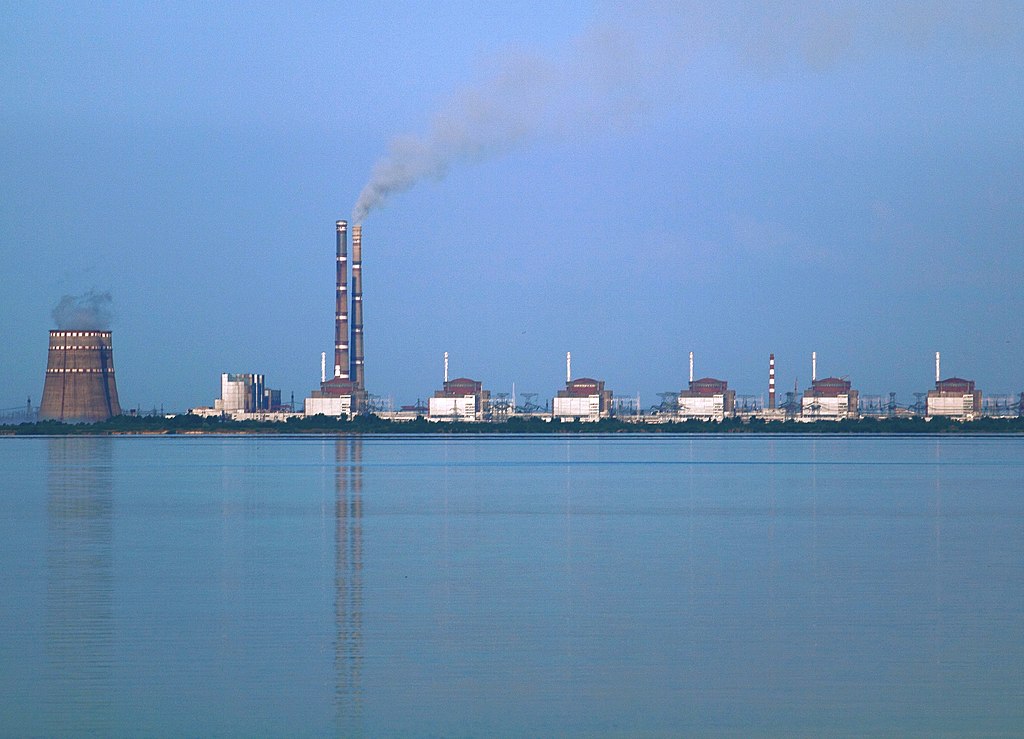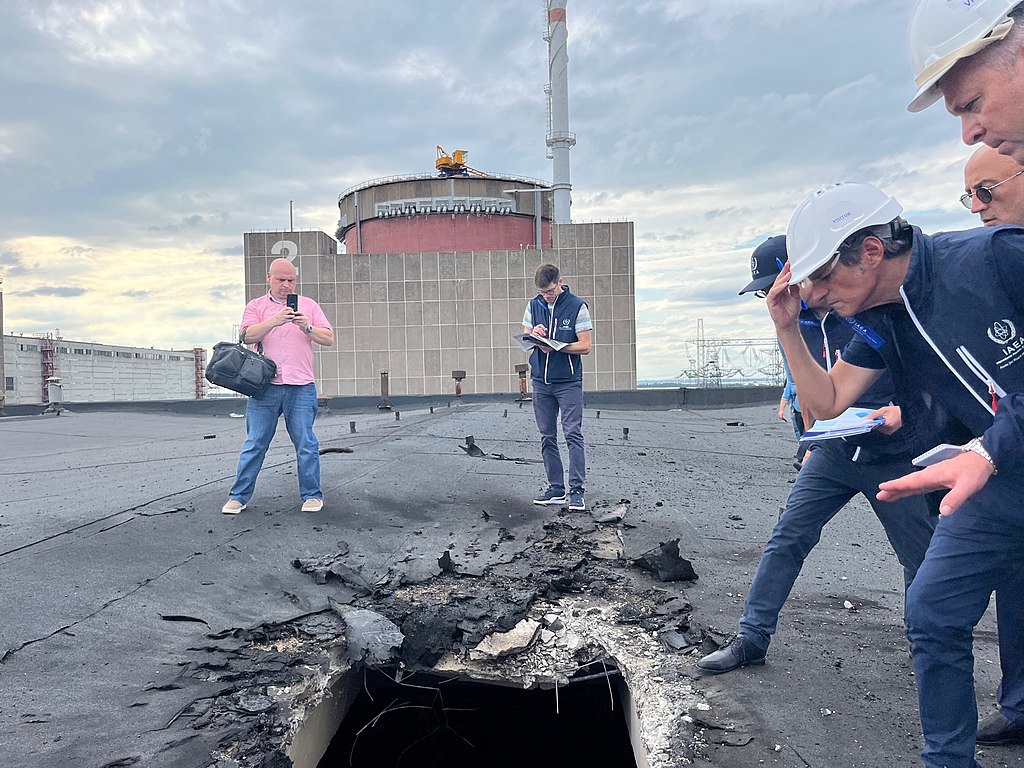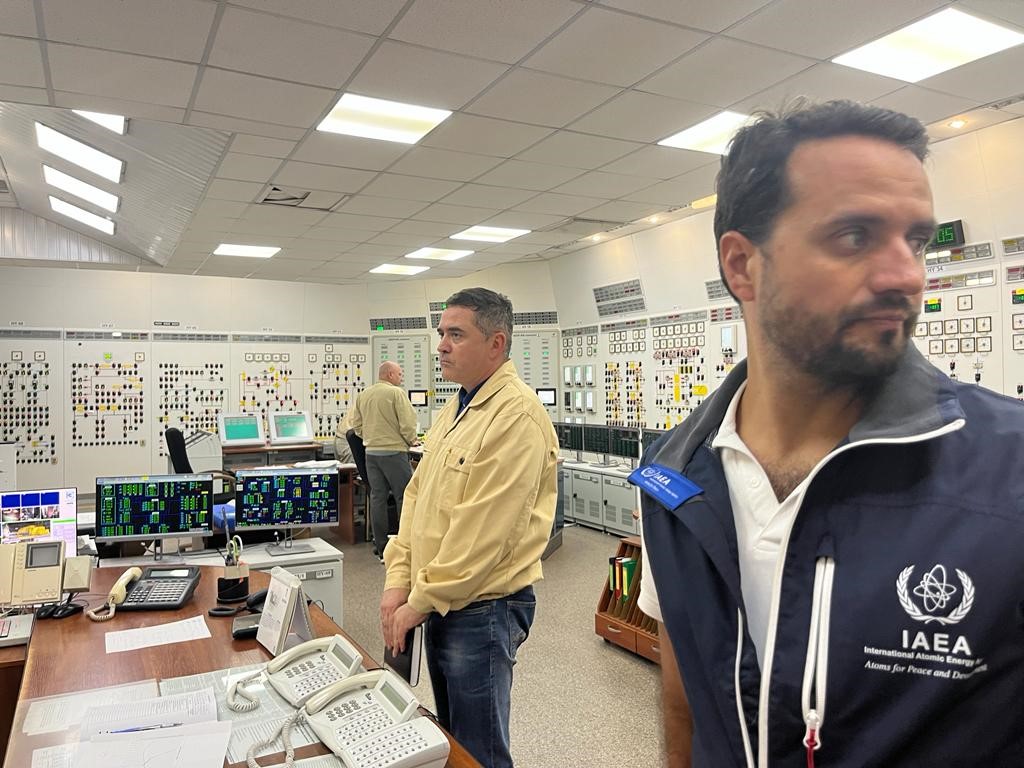Zaporizhzhia, Ukraine —(Map)
Ukraine has shut down the Zaporizhzhia Nuclear Power Plant. The plant – the largest in Europe – has often been attacked in recent months, causing safety concerns. After losing power from outside, experts have decided to shut the plant down for safety.
Nuclear Power
Nuclear power is created by splitting atoms. It’s a dangerous process – built on the science behind nuclear weapons. Nuclear power produces toxic waste which must be handled and stored with great care.
The great danger of nuclear power is radiation. If something is “radioactive” that means it gives off radiation – energy traveling in waves. High levels of radiation can cause sickness or even death.

(Source: Ralf1969 [CC BY-SA 3.0], via Wikimedia Commons.)
Zaporizhzhia is one of the ten largest nuclear power plants in the world. Russia took control of the plant in March, soon after it invaded Ukraine. But the plant is still being run by Ukrainian workers from Energoatom, the Ukrainian government group in charge of nuclear power. The plant has six separate “reactors”. These are the parts of the plant where nuclear reactions happen, creating energy.
In recent months, the plant has been attacked several times. Ukraine accuses Russia of attacking the plant, but Russia says the attacks came from Ukraine. The attacks have damaged the plant, and most of its reactors have been shut down.
😕
This image has not been loaded because of your cookie choices. To view the content, you can accept 'Non-necessary' cookies.
Russia took control of the Zaporizhzhia plant in March, soon after it invaded Ukraine. But the plant is still being run by Ukrainian workers from Energoatom, the Ukrainian government group in charge of nuclear power. Above, a Russian soldier in front of reactor number 1 in May.
The attacks didn’t just hit the plant, they also cut the lines which supply the plant with electricity. When this happens, a nearby coal-burning power plant provides emergency electricity. But recent attacks have also cut the electricity from the coal-burning plant.
On August 25th, the plant was completely cut off from Ukraine’s national electrical system for the first time in nearly 40 years. That greatly increased the chances of a serious nuclear accident.
To run safely, a nuclear plant must be kept cool so it doesn’t overheat. Without electricity from outside, the plant must somehow create its own electricity to help cool the plant. If that electricity supply fails, it could quickly lead to a very dangerous situation.

(Source: Fredrik Dahl / IAEA [CC BY 2.0], via Wikimedia Commons.)
In early September, experts from the International Atomic Energy Agency (IAEA) inspected the plant. The team said they were seriously concerned about the safety of the plant. The IAEA recommended creating a non-military zone around the plant, where no fighting would take place.
The first time the plant lost all outside power, it used diesel generators to keep the cooling going. But when the power was cut again several days ago, the plant used an unusual emergency method called “island mode”: using power generated by its single reactor to run its own cooling system. Island mode is only meant to be used for about an hour, but the plant ran on it for days.
This weekend, outside electricity was restored. Once it had electricity for cooling again, Energoatom decided to “shut down power unit No. six and transfer it to the safest state – cold shutdown.” But shutting down nuclear reactors isn’t a fast process, and even when it’s shut down, the plant still needs to be cooled.

(Source: IAEA [CC BY 2.0], via Wikimedia Commons.)
The plant has 20 diesel generators and enough fuel to cool the plant for 10 days. But experts warn that there could still be problems if the electricity is cut again and the diesel fuel runs out.
The power plant in Zaporizhzhia was Ukraine’s last working nuclear power plant. It was an important resource for the country. Before the invasion, it provided about 20% of Ukraine’s electricity. The energy from the plant will be missed this winter.
😕
This map has not been loaded because of your cookie choices. To view the content, you can accept 'Non-necessary' cookies.
